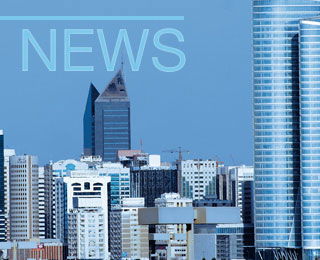The last week has seen three leading European cement majors release first-half 2012 results: Lafarge, HeidelbergCement and Italcementi. The latest figures appear to confirm the upturn in North America, which, together with the emerging markets, have been the main drivers of demand as parts of Europe remain a drag on performance. While a slower volume growth environment persists, improved pricing and cost reduction measures continue to be central themes.
In terms of market performance, western and northern Europe notably weighed on 1H results. Lafarge's European turnover fell 7.5 per cent, with a 10.8 per cent reduction in the west, which was pulled down by Greece and Spain. Italcementi also saw a marked fall in Spanish volumes as well as a sharp reduction in its domestic market of Italy where cement and clinker volume were down 24.9 per cent in 2Q12, having declined 27.9 per cent in the first quarter. Heidelberg reported a 5.1 per cent drop in overall western and northern cement and clinker deliveries to 10.24Mt. Its Nordic and German volumes did increase but lower shipments were recorded in Great Britain and the Benelux, with Dutch and British demand being particularly weak.
Over in central Europe, HeidelbergCement's lower volumes were more than made up for by an over 70 per cent increase in Russia, helped by the new Tula works. In Poland and Ukraine, public construction expenditure has weakened considerably following the completion of numerous infrastructural projects in connection with the European Football Championships. In Poland alone, demand dropped ominously by 19.4 per cent in June.
All three producers reported increased sales in North America where a kinder winter and an improvement in trading conditions have been beneficial. The recovery in residential construction is continuing with housing investment rising 9.7 per cent in the 2Q12. Heidelberg cement deliveries improved 16.7 per cent to 5.44Mt with all US regions showing double-digit volume growth. Lafarge's cement shipments, at an underlying level, improved by 15 and 14 per cent in Canada and USA, respectively. Italcementi, meanwhile, saw an 8.7 per cent increase in cement shipments to 2Mt.
The emerging countries of Asia also proved to be notable growth drivers with Italcementi reporting a positive market performance in India (cement and clinker sales were up 10.2 per cent) and Lafarge returning high single-digit rises in Malaysia, South Korea and the Philippines. HeidelbergCement increased its market share in the booming market of Indonesia and raised volumes by 17.4 per cent. Moreover, the company has further cut volumes to serve domestic demand. Indocement is now importing and is building an extra 1.9Mta of grinding capacity for completion next year.
Elsewhere, HeidelbergCement announced improvements in the Africa region, helped by higher demand in Benin, Ghana and Tanzania. New capacity enabled Lafarge to increase cement deliveries in Nigeria by 34.6 per cent while its Kenya and South African operations also saw strong gains. In the Middle East, both Lafarge and Italcementi reported declines due to the uncertain political environment and excess production capacity, although Italcementi noted that results were better than expected. In Latin America, Lafarge's turnover improved by 9.2 per cent driven by rising volumes in Brazil and Ecuador.
The six months to June have seen an improved pricing environment in some markets. Lafarge reported successful price improvements across all its product lines and Italcementi recorded its largest increases in India, North America and Spain. HeidelbergCement also saw higher prices and said that it aims to offset cost increases (which are expected to increase at a lower rate than in 2011) partly with targeted price rises.
Cost reduction continues to be a chief focus as producers aim to improve margins and cut debt loads. During the year, Italcementi announced the reorganisation of its domestic operations and sold its Pontassieve plant in June with two further plant closures planned for 3Q12. Lafarge said it achieved EUR170m of cost savings in 1H12 and is on track to reach at least EUR400m for the year. It also confirmed its aim to secure at least EUR1bn of divestments this year to help cut net debt to less than EUR10bn as soon as possible in 2013. HeidelbergCement, meanwhile, said its FOX13 programme led to an improvement in cash flow of EUR138m and is well ahead of schedule to generate total savings of EUR200m this year. It now plans two new initiatives: the first to reduce its worldwide logistics costs and the second targets margin improvement in cement in Europe and North America.
Going forward, Lafarge said it remains prudent on its outlook but sees demand moving higher and maintains its estimated market growth of between 1-4 per cent in 2012 versus 2011. HeidelbergCement, meanwhile, said it expects sustained growth in Asia-Pacific and Africa-Mediterranean Basin as well as continuing recovery in North America but envisages a slight dip in western and northern European demand.

Power Cement reports positive 3Q and 9MFY24-25 results
Pakistan-based Power Cement Ltd posted PKR7.182bn (US$52.5m) in revenue for the quarter ended ...